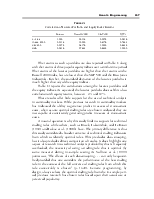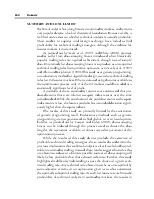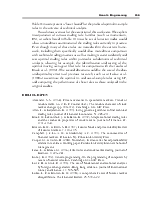

















![]()
![]() TECHNICAL ANALYSIS AND
TECHNICAL ANALYSIS AND
GENETIC PROGRAMMING:
CONSTRUCTING AND
![]()
![]() TESTING A COMMODITY
TESTING A COMMODITY
![]() PORTFOLIO
PORTFOLIO
Although academic research on the usefulness of technical analysis is mixed at best, its use remains widespread in commodity markets. Much prior research into technical analysis suffers from data-snooping biases. Using genetic programming, ex ante optimal technical trading strategies are identified. Because they are mechanically generated from simple arithmetic operators, they are free of the data-snooping bias common in technical analysis research. Futures prices from 24 markets are used in rule generation. Rules for only two of the markets are capable of generating profits at the 5% level of significance using out-of-sample data, lending little support for technically based systems. © 2005 Wiley Periodicals, Inc. Jrl Fut Mark 25:643–660, 2005
The helpful comments of Wade Brorsen, Scott Irwin, Brian Roe, and participants at the 2003 NCR-134 Conference on Applied Commodity Price Analysis, Forecasting and Risk Management are gratefully acknowledged. Any remaining errors are the responsibility of the author.
For correspondence, Assistant Professor, Department of Agricultural, Environmental, and Development Economics, The Ohio State University, 318 Agricultural Administration Building,
2120 Fyffe Road, Columbus, Ohio 43210-1067; e-mail: Roberts.628@osu.edu
Received September 2003; Accepted July 2004
![]()
Matthew C. Roberts is an Assistant Professor in the Department of Agricultural, Environmental, and Development Economics at the Ohio State University in Columbus, Ohio.
The Journal of Futures Markets, Vol. 25, No. 7, 643–660 (2005) © 2005 Wiley Periodicals, Inc.
Published online in Wiley InterScience (www.interscience.wiley.com). DOI: 10.1002/fut.20161
Technical analysis is a broad collection of methods and strategies which attempt to forecast future prices on the basis of past prices or other observable market statistics, such as volume or open interest. According to Malkiel (1992), “efficiency with respect to an information set . . . implies that it is impossible to make economic profits by trading on the basis of [that information set]” (p. 260). The information set used to define weakform efficiency consists of precisely the information that technical analysis purports to exploit—historical market conditions. While much of the academic literature concerning technical analysis is focused on the issue of market efficiency, as pointed out by Lukac and Brorsen (1990), trading strategies reveal no information on the costs of implementation, and therefore profitable strategies may not, in fact, violate market efficiency.
Academia maintains a generally negative view of technical analysis, perhaps best typified by Malkiel (1985), “Obviously, I am biased against the chartist. This is not only a personal predilection, but a professional one as well. Technical analysis is anathema to the academic world” (p. 132). There are some that are more charitable toward technical analysis, Campbell, Lo, and MacKinlay (1997) suggest “perhaps some of the prejudice against technical analysis can be attributed to semantics” (p. 43). Nevertheless, the study of technical analysis has a long history in academia, with mixed results.
There is little dispute that technical analysis is very common among practitioners. Oberlechner (2001) surveys foreign exchange traders on their use of technical analysis, and finds that “Only a very small minority of foreign exchange traders demonstrate an exclusively fundamental or exclusively chartist overall forecasting approach” (p. 89). This is consistent with the previous survey research performed by Taylor and Allen (1992), Menkhoff (1997), and Lui and Mole (1998). Brorsen and Irwin (1987) report that only 2 of 21 large commodity fund managers surveyed used no objective technical analysis.
Early studies, such as Alexander (1964) and Fama and Blume (1966), identified and tested simple technical strategies using equity index data and found that although they may have some predictive power, they were unable to consistently generate positive profits. Over the succeeding decades, many researchers reached similar conclusions, especially when transactions costs were included in the analysis. There are a few articles which identify profitable technical strategies, such as Sweeney (1988) and Osler (1998).[1]
In contrast, a larger proportion of the studies of technical analysis in the commodity markets have found profits. Lukac et al. (1988b) found that “[s]even of the twelve systems had gross returns significantly above zero. Four of twelve trading systems generated aggregate portfolio net returns significantly greater than zero” (p. 637). Similarly, Lukac and Brorsen (1990) found that “several systems did generate returns significantly above transaction costs” (p. 593). Both of these studies implemented multiple trading systems based upon survey evidence of the systems in actual use by futures funds.
Уважаемый посетитель!
Чтобы распечатать файл, скачайте его (в формате Word).
Ссылка на скачивание - внизу страницы.